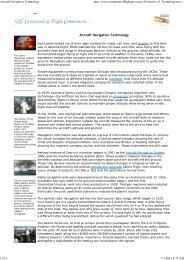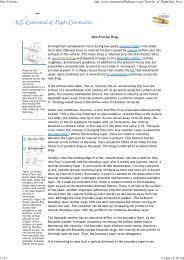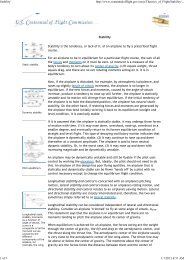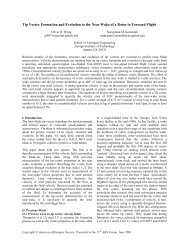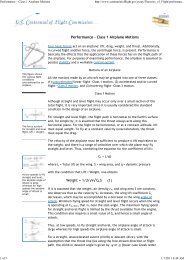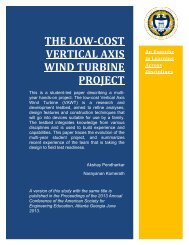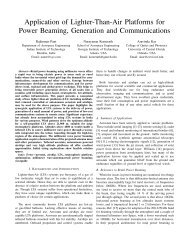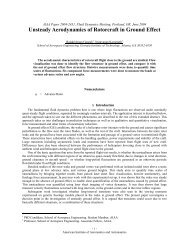Boeing-University Relations - A Review and Prospects for the Future
Boeing-University Relations - A Review and Prospects for the Future
Boeing-University Relations - A Review and Prospects for the Future
You also want an ePaper? Increase the reach of your titles
YUMPU automatically turns print PDFs into web optimized ePapers that Google loves.
WFSF influence on personal philosophy as educatorAppreciation <strong>for</strong> how large projects come toge<strong>the</strong>r <strong>for</strong> asingle end product. Appreciation of System Engineering.Discussions with senior faculty. Overview of howdifferent personalities fit into a modern engineeringcompany. Rein<strong>for</strong>ced importance of self-education skills.Far more acceptance of ‘soft issues’. Rein<strong>for</strong>cedcommitment to undergraduate teaching. Awareness of whyengineers need many types of expertise such as history,economics <strong>and</strong> politics. Need to pay more attention tofundamentals in <strong>the</strong> first 3 years of <strong>the</strong> undergraduatecurriculum, <strong>and</strong> use <strong>the</strong> final years to transition toindustry.Top 3 issues <strong>for</strong> <strong>the</strong> future of engineering education:Educating <strong>for</strong> innovation. Regaining pre-eminence ininnovation <strong>and</strong> analytical thinking, with ma<strong>the</strong>maticalskills. Balancing soft skills vs. basics. Relevance ofBachelors’ degree vs. Masters level first professionaldegree. Competing with law, medicine <strong>and</strong> business <strong>for</strong><strong>the</strong> best students, <strong>and</strong> creating a welcoming environment<strong>for</strong> underrepresented groups. Finding resources <strong>for</strong> h<strong>and</strong>sonexperiences; allowing undergraduates to reach <strong>the</strong>ir truepotential to contribute to research / design projects.Adapting <strong>the</strong> curriculum to change. Anticipatingtechnological advances. Developing interdisciplinaryprograms.Program expectations <strong>and</strong> modes ofinvolvement varied widely, driven byindividual preferences, security / programconstraints <strong>and</strong> <strong>the</strong> mentors’ schedules <strong>and</strong>preferences. The common featureappeared to be that everyone had a hugevolume of experience <strong>and</strong> accumulatedproject ideas to pursue. A search of <strong>the</strong>internet shows that faculty members areproud of being selected <strong>for</strong> any of <strong>the</strong><strong>Boeing</strong> awards. An important difference inthis program is <strong>the</strong> explicit expectationthat participation in <strong>the</strong> Welliver programmust have some lasting impact onacademic programs, driven by facultyinitiative. Some examples:• Campus seminar upon return 11• ASEE papers 12,13,14,15 <strong>and</strong> IUGREEEpresentation(s) 9 .• Curricular changes at all levels,specifically increasing “relevantexamples” in courses, <strong>and</strong>incorporation of teamworkexperiences.• Ethics Case Studies 16 .A View Towards <strong>the</strong> <strong>Future</strong>Clearly, <strong>the</strong> Welliver program has built enough bridges between industry <strong>and</strong> academia to moveon to <strong>the</strong> next level in collaboration. We see opportunities <strong>for</strong> close synergy between industry<strong>and</strong> academia to deal with some of <strong>the</strong> very large opportunities that arise from <strong>the</strong> new emphaseson globalization <strong>and</strong> large-system design. Universities are well-poised to take on <strong>the</strong> most riskyparts of cross-disciplinary concept development, while industry can provide <strong>the</strong> relevance <strong>and</strong>some of <strong>the</strong> tools needed <strong>for</strong> such ef<strong>for</strong>ts. Closer involvement of faculty <strong>and</strong> industry expertswho underst<strong>and</strong> each o<strong>the</strong>r, will open <strong>the</strong> way to tailor effective joint programs, with students as<strong>the</strong> focal points.An initial cut at <strong>the</strong> strategies <strong>for</strong> future engineering education is summarized below,incorporating some of <strong>the</strong> best practices from academia into evolving industry needs. A highquality undergraduate university program should address <strong>the</strong> following “basics”:• Demonstrate that engineering is practiced within a much broader societal context – not as anend in itself.• Teach students how to learn - <strong>and</strong> make it clear that it is both a life-long pleasure <strong>and</strong> necessity.Proceedings of <strong>the</strong> 2005 American Society <strong>for</strong> Engineering Education Annual Conference & ExpositionCopyright ASEE 2005, American Society <strong>for</strong> Engineering Education.


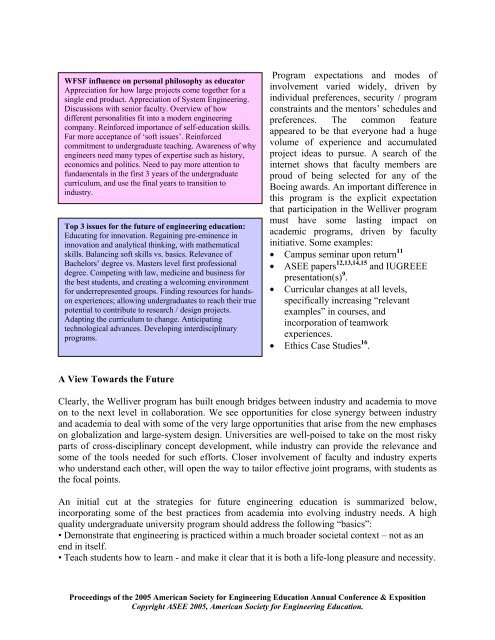
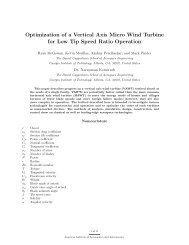
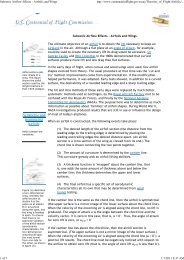

![p density of fluid, kg/m3 [Greek letter rho] V mean velocity of fluid, m ...](https://img.yumpu.com/50595898/1/184x260/p-density-of-fluid-kg-m3-greek-letter-rho-v-mean-velocity-of-fluid-m-.jpg?quality=85)
